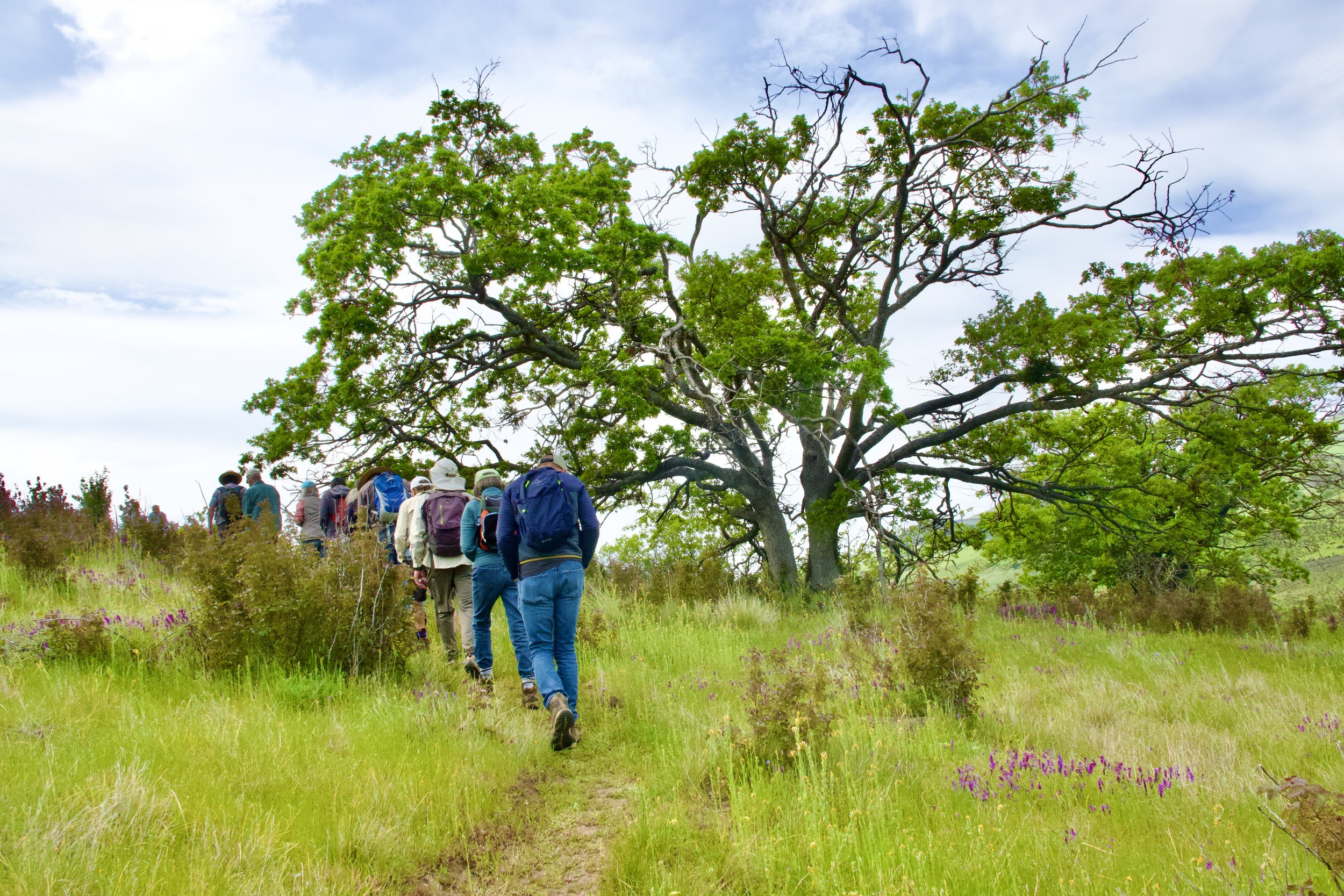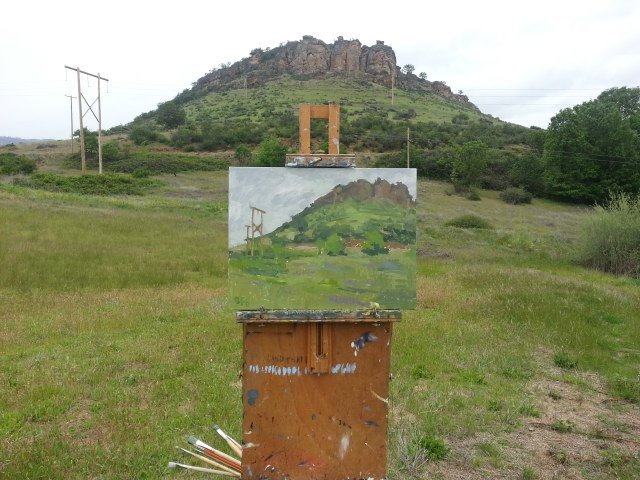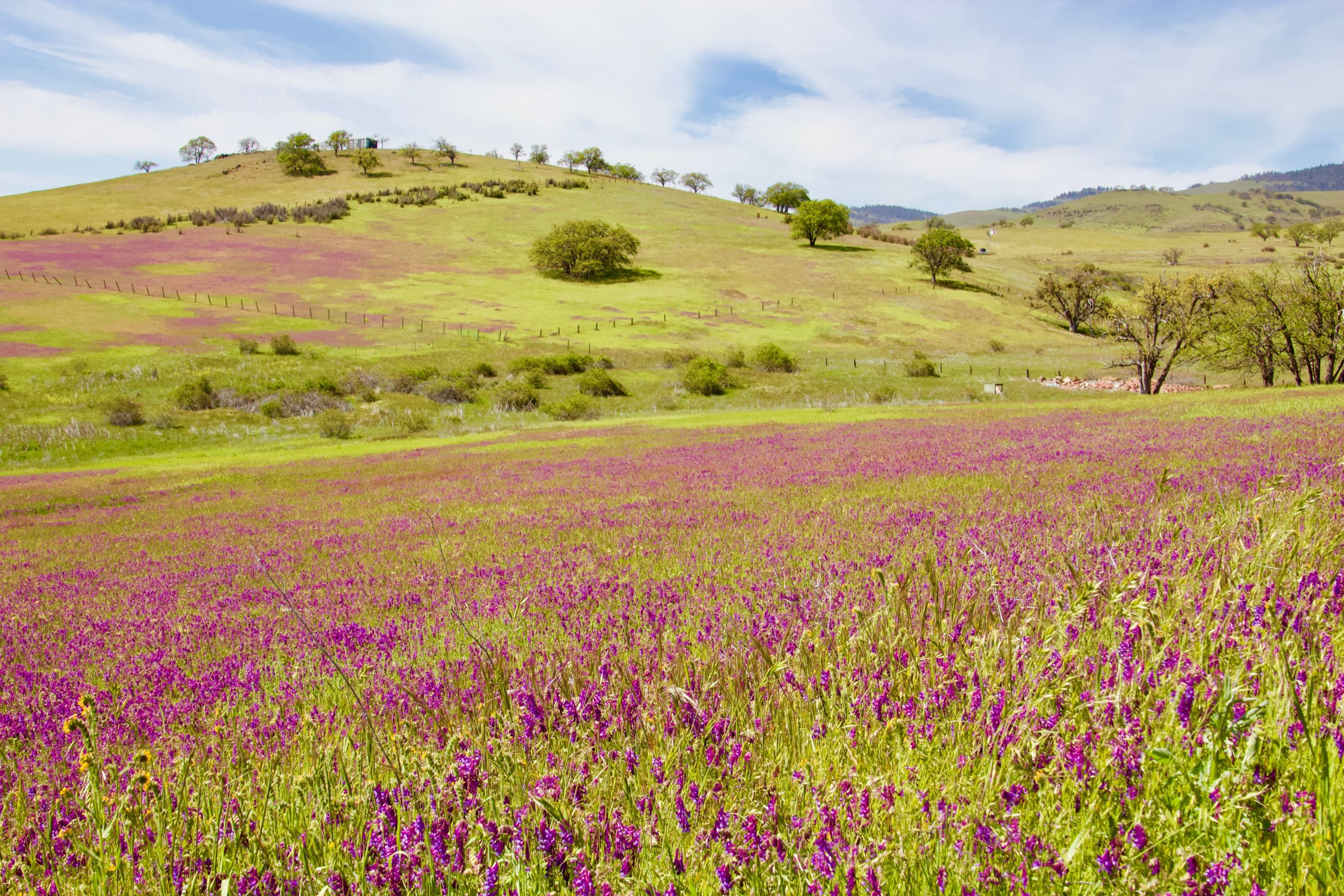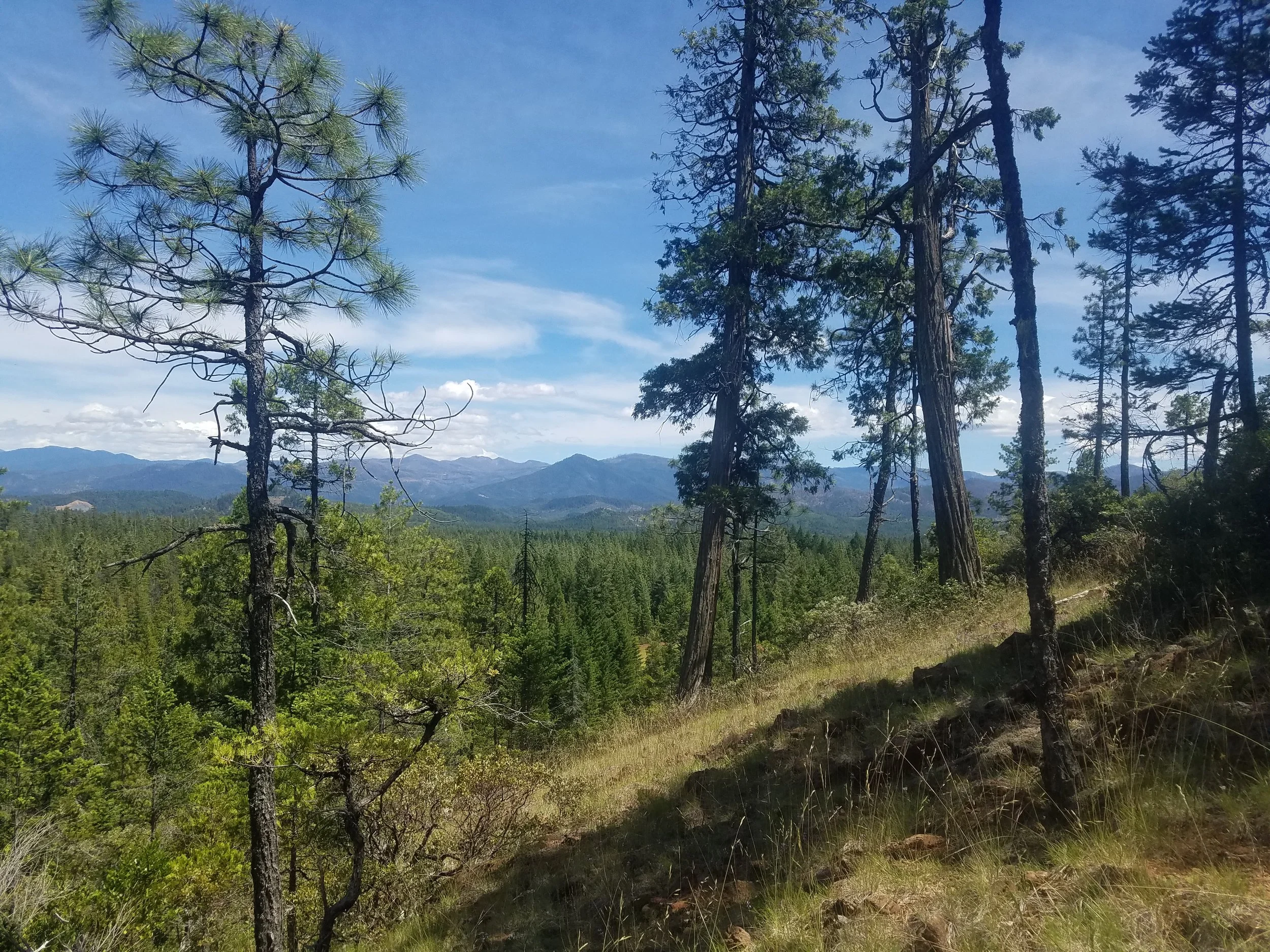A species described in the Sibley bird guide as “uncommon to rare” was photographed by SOLC volunteer Cat Gould while walking in the Ashland Watershed recently. Can you find it camouflaged in this photo of a mature whiteleaf manzanita?
The secretive Long-eared Owl nests and roosts in dense tangles of deciduous or coniferous vegetation adjacent to grasslands, shrublands, or open forests. They nest on dwarf-mistletoe brooms in Douglas-fir or stick-built abandoned hawk or large bird nests. Regional birders have spotted them in expansive, mature stands of whiteleaf manzanita chaparral in the Applegate Watershed and the Ashland Watershed, and in dense trees and shrubs in the vicinity of Eagle Point (see photo below by Frank Lospalluto).
Sightings of owls during their breeding season (March – June) could indicate nesting nearby. Individual birds may roost in groups in dense vegetation during summer and winter and may use those same colonial roost areas for springtime breeding. According to one author, they may be the least understood owl in western Oregon. We can thank the mosaic of open and closed forests, shrublands, and grasslands, created by millennia of mixed severity fire events and a dynamic geologic history, for the incredible biodiversity of this Klamath-Siskiyou Ecoregion we call home.












